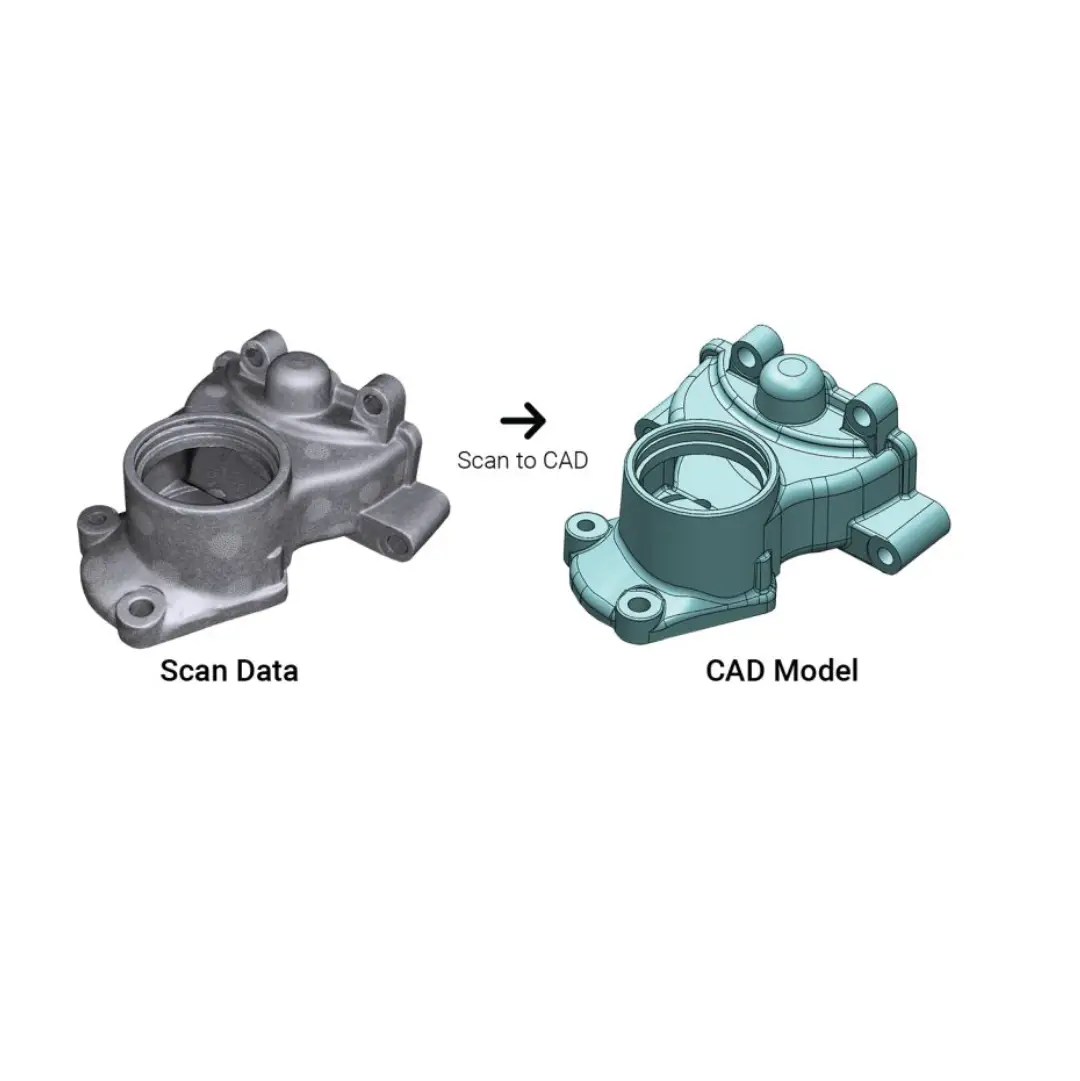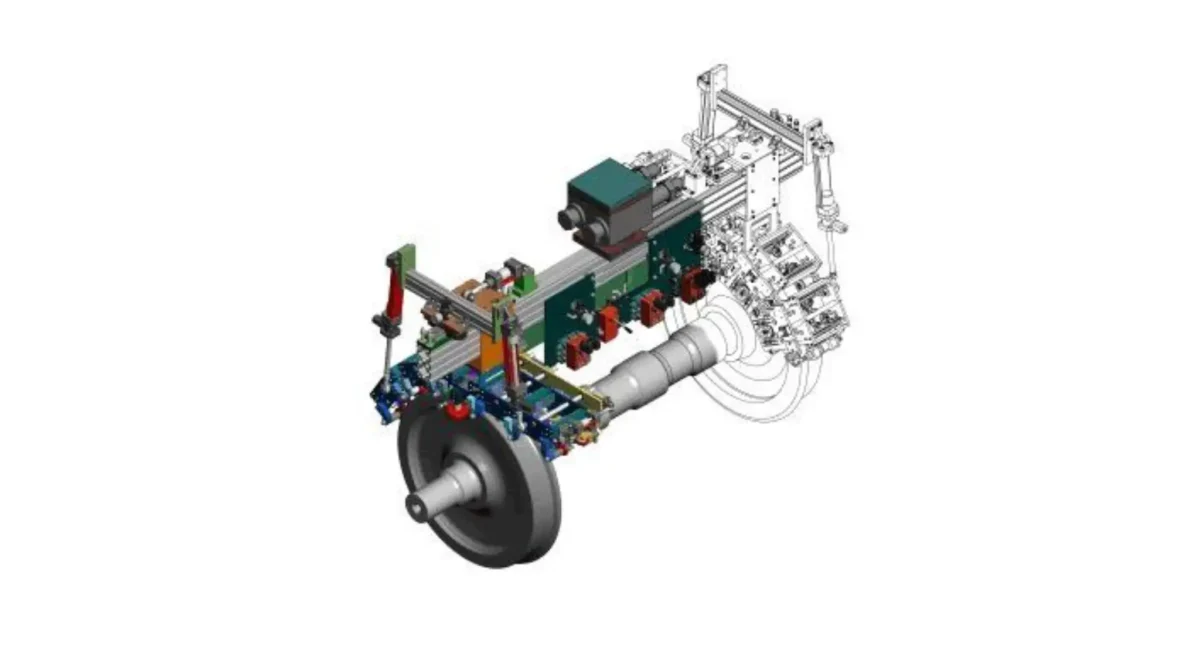Imagine this: a key piece of equipment on your factory floor grinds to a halt. The culprit? A small, oddly shaped metal part that no one makes anymore because the manufacturer went out of business two decades ago. Or picture an inventor holding a brilliant prototype, something that works perfectly, but with no digital design files to reproduce or refine it.
In both cases, the challenge is the same: how do you bridge the gap between the physical and the digital world?
That’s where reverse engineering comes in a process often misunderstood as mere imitation. In truth, it’s one of the most powerful innovation tools available today. Reverse engineering is like a digital resurrection, turning physical objects into editable, intelligent 3D designs that can be improved, reproduced, and reimagined for modern needs.
In this guide, we’ll take you through the fascinating journey from 3D scanning to product innovation and show how Shark Design helps transform old, broken, or brilliant physical objects into the blueprints of the future.
What Is Reverse Engineering Really? It’s Not What You Think.

When most people hear “reverse engineering,” they imagine someone copying an existing product. But that’s an outdated and incomplete picture. Modern reverse engineering isn’t about imitation, it’s about understanding and improving.
In simple terms, reverse engineering is the process of deconstructing a physical object to uncover its design intent, function, and structure, ultimately creating a precise digital CAD model.
Think of it like a food critic tasting a dish and decoding the chef’s method, not to clone it, but to learn how it was made and how it could be refined.
At its core, reverse engineering seeks to capture not just geometry, but intelligence, the “why” behind every curve, cut, and component.
It’s used to:
- Study and reproduce legacy components for obsolete machines.
- Understand a competitor’s design for benchmarking or innovation insight.
- Digitally recreate handcrafted prototypes to prepare them for manufacturing.
- Enable product improvement, ensuring older designs meet today’s standards.
In the hands of a skilled product development company like Shark Design, reverse engineering becomes less about imitation and more about innovation, a means of reviving valuable designs, learning from them, and evolving them into something better suited for the future.
The Digital Capture – A Deep Dive into 3D Scanning Technologies
Every great reverse engineering project begins with capturing reality in high fidelity. This step transforms the physical world into a sea of digital data that designers and engineers can work with.
The Technology Behind the Scan
Two primary technologies dominate the field of 3D scanning for reverse engineering—each with its own strengths and ideal use cases:
1. Structured Light & Laser Scanners – The “Detail Masters”
These scanners project patterns of light or laser beams onto the object’s surface. Cameras capture how the patterns distort over contours, translating those distortions into millions of data points.
They’re ideal for:
- Complex, organic shapes like car parts or consumer products.
- High-detail applications, such as medical components or precision tools.
Laser scanners can achieve accuracy down to microns, making them invaluable for industries where precision isn’t optional.
2. Photogrammetry – The “Big Picture” Approach
Instead of lasers, photogrammetry relies on photographs. Dozens or even hundreds of overlapping images are taken from different angles. Specialized software then reconstructs the object’s shape by triangulating points between images.
This technique shines for:
- Large objects such as automotive bodies, furniture, or architectural details.
- Situations where portability and accessibility are more important than micron-level precision.
Understanding What Matters: Accuracy, Resolution, and Speed
These three factors define the scanning process:
- Accuracy determines how closely the digital model matches the real-world object.
- Resolution affects how much detail is captured.
- Speed dictates how quickly scans can be completed.
High-accuracy scans are critical for mechanical parts, while fast, lower-resolution scans might be fine for conceptual visualization.
Pro Tip from Shark Design
Choosing the right scanning technology depends entirely on your project’s goals. There’s no one-size-fits-all solution. For example, at Shark Design, we might use laser scanning for a precision engine part but photogrammetry for a large-scale furniture prototype. The key is understanding both the intended use and the tolerance requirements.
Once the scan is complete, what you get is an immense cloud of digital points—a point cloud, ready for the next phase of transformation.
The Magic Happens in the Middle – From Point Cloud to Perfect CAD
The scanning process gives us data, but not design. Turning that raw data into an editable, functional CAD model is where the artistry of reverse engineering truly shines.
Step 1: The Point Cloud – A Digital Constellation
The initial output of any scan is a point cloud, which looks like a floating constellation of millions of dots. Each dot represents a precise coordinate in 3D space.
While visually impressive, a point cloud on its own is not usable for manufacturing or modification, it’s just geometry without intelligence.
Step 2: Cleaning and Meshing – Creating the Digital Skin
Before any design work can happen, the point cloud must be processed. This involves:
- Removing noise or stray points.
- Filling in small gaps caused by missing data.
- Converting the clean point cloud into a mesh (usually an STL file).
Think of this as turning the constellation into a digital skin, a solid-looking, continuous surface that represents the scanned object.
Step 3: From Mesh to CAD – The Leap to Intelligence
Here’s the critical transformation: turning that “dumb” mesh into a “smart” CAD model.
A mesh is static, it can’t be edited beyond superficial tweaks. But a CAD model is parametric, meaning it understands its own features: holes, fillets, radii, and design intent.
Using tools like SOLIDWORKS, Autodesk Fusion 360, or Siemens NX, skilled designers rebuild the object digitally, interpreting each feature with precision.
Analogy:
A mesh is like a photograph of a sculpture, it shows what the object looks like.
A CAD model is like the sculptor’s blueprint, it tells you how it was made and how to change it.
This stage demands a blend of technical expertise and design intuition. At Shark Design, our engineers don’t just replicate geometry, they interpret function. We ask questions like:
- Why was this feature designed this way?
- Could this part be lighter or stronger?
- How can it be optimized for modern manufacturing methods like injection molding or 3D printing?
This blend of engineering and artistry transforms reverse engineering from replication into re-creation.
Beyond Reproduction – The Innovation Engine
Once a functional CAD model exists, the real power of reverse engineering begins to unfold. It’s not just about recreating what was lost, it’s about improving what existed.
Here are the most impactful ways reverse engineering drives modern innovation:
1. Legacy and Obsolete Parts Reproduction
A classic application of reverse engineering is reviving obsolete parts for machinery, vehicles, or tools that are no longer supported. Instead of scouring online auctions for rare components, companies can scan the existing part, repair its geometry, and manufacture a new one, often with better materials and tighter tolerances.
For manufacturers maintaining legacy equipment, this capability is nothing short of transformative.
2. Performance Enhancement and Redesign
Reverse engineering is also a launchpad for product improvement. Once a digital model is available, it can be run through simulation software like FEA (Finite Element Analysis) or CFD (Computational Fluid Dynamics) to identify stress points, weak areas, or aerodynamic inefficiencies.
Designers can then redesign the part to be stronger, lighter, or more efficient, pushing performance beyond the original limits.
3. Customization and Interoperability
Imagine scanning a car’s interior dashboard and then designing a custom phone mount or infotainment upgrade that fits perfectly. That’s interoperability in action, using reverse engineering to make old and new technologies work together seamlessly.
This same approach applies to medical devices, prosthetics, and consumer electronics, where precision fit and customization are critical.
4. Digital Archiving and Preservation
Reverse engineering isn’t limited to manufacturing. It also plays a vital role in digitally preserving historical artifacts, one-off prototypes, or fragile components that might degrade over time.
Museums, collectors, and research institutions use 3D scanning to create permanent digital archives, ensuring valuable objects live on, even if the originals don’t.
Conclusion
Reverse engineering is more than a process, it’s a bridge between the past and the future of design. From the initial 3D scan to a functional CAD model, and finally to product innovation, it transforms physical reality into digital opportunity.
At Shark Design, we see every worn-out component or legacy product as untapped potential, an invitation to rethink, refine, and rebuild for a smarter future.
In a world where innovation often starts with what already exists, reverse engineering reminds us that the past isn’t a limit, it’s a launchpad.
At Shark Design, we see a broken part not as a problem, but as an opportunity. An opportunity to not just fix what was, but to build what could be.

